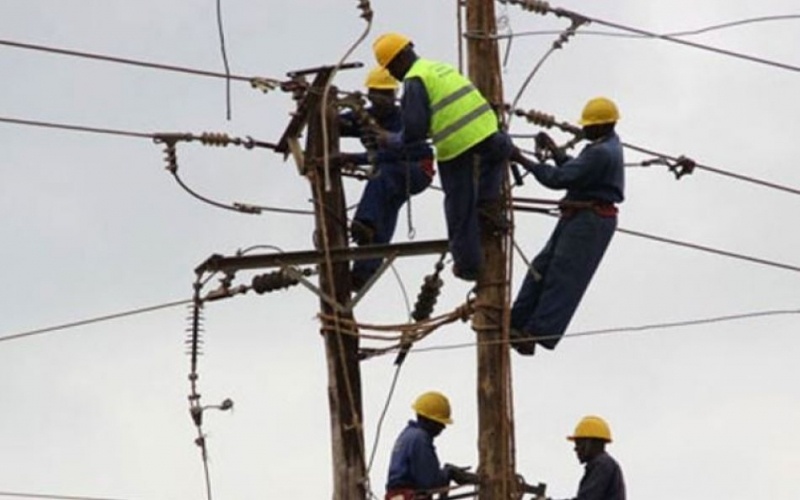The Embassy of the United States (U.S.) in Nairobi has announced the outage of power in the consulate that has led to the cancellation of appointments for today.
“Due to a power outage, all appointments with the consular section at the United States (U.S.) Embassy Nairobi on March 2, 2020 are cancelled. The Embassy will contact applicants to reschedule canceled appointments. We sincerely regret the inconvenience,” says the Embassy.
While not explaining the reason for the power outage at the Embassy outage, it is among others that have taken place in the country in late February due to heavy rain in parts such as Garissa, Lamu and Tana River.
Research states that Kenyan companies lose 10 percent of their production cost due to power outages.
While the Embassy has apologized for the inconvenience to all those who had been affected in a tweet and mitigating with a promise for reschedule, the issue is linked to a report published in the media, stating that the power transmitter and distributor has become “technically insolvent.”
The reason given for this is because the liabilities of Kenya Power have exceeded its assets. According to a report of its financial performance released last week, Kenya Power recorded profits of Kshs 262 million by the first half of 2019, down from Kshs 3.2 billion in the same period in 2018.
The company also has a debt of Kshs 20 billion in electricity that has been used, but not been paid for. There are other issues that have hampered the way that the company has done its operations.
For instance, there are cartels of people who steal electricity. According to the media, the Directorate of Criminal Investigations (DCI), unearthed how a team of Kenya Power employees, both at senior and junior level, have been tampering with the billing system at the company to inflate power bills or ask for bribes from people who are not able to able to pay money for requisite money, leading to the loss of Kshs 65 million.
In late February 2020, Kenya Power announced that it had sacked 100 employees over the past year, stating that they were not just cartels and involved in other illicit activities, such as electricity theft, but that their activities were also capable of eating into the company’s earnings.
While nine percent of the country’s energy mix comes from electricity, states the Lahmeyer report, the bigger chunk comes from biomass energy as a renewable energy source, which make up for the deficit in the national grid. The other forms of energy are geothermal, hydrothermal, solar and wind.
There are 840 million people in the world who lack access to electricity, states the World Bank.
Renewable Energy
Ahead of the Middle East Energy event slated to occur between March 3rd and 5th, 2020, the Chief Procurement Officer at the Kenya Electricity Generating (Kengen) company says that the intention of African governments is to connect 60 million households to electricity.
“ While access to electricity can be able to create jobs and facilitate business transactions, over 640 million of Africans have no access to electricity, thus making it the lowest rate in the world,” he says.
The “New Deal On Energy For Africa” states that another way to reduce the challenge of electricity in the continent is to mobilize financing for the continent’s financing, to the tune of $ 30- $ 55 billion per annum by the African Development Bank (AfDB), able to off-set such challenges as power outages that led to the power outage of 2 to 4 percent of the continent’s Gross Domestic Product (GDP).
Another financier that is committed to adding to the renewable challenge in the continent with hopes of improving solar energy access for 250,000 million households in 14 countries in the continents, is the World Bank, with a funding worth $ 150 million made last week.
Due to its ability to be affordable and sustainable, the off-solar national grid market in Africa has become popular that it has reached 420 million users globally and in Africa, though it will require at least $ 6.6. billion in financing to attain universal access.
Last year in July, Kenya commissioned the largest wind farm in the continent, with 365 wind turbines so as to be able to feed 15 percent of electricity to the national grid, with the turbines having a capacity of 850 kilowatts (kw) each.
Turkana County, it has been reported, has the advantage of semi-arid and arid land that has wind, a renwable source of energy, above it of 428 kilometres.
The project was able to attract investors such as American search engine, Google, which is seeking for 12,5 percent stake in the project, though that ambition has been cancelled this month. Other investors into the project include Vestas Eastern Africa Limited, KP & P Africa B.V. and Aldywch International.
But, earlier this month, Google pulled out, Weetracker announced, citing the fact that the Lake Turkana Wind Power project sits on illegally acquired land, worth about 150,000 acres in Marsabit county, used by pastrolists in Marsabit County to graze their cattle.
Overall, the Lake Turkana Wind Power Project has opened the way for other wind farms in the continent. An example includes the wind power plant in Senegal, touted to be the second largest in West Africa.
Funded by British company, Lekela, it seeks to give two million citizens from Senegal access to electricity, with currently only about 65 percent of them having access to the resource, states the Central Intelligence Agency (CIA).

